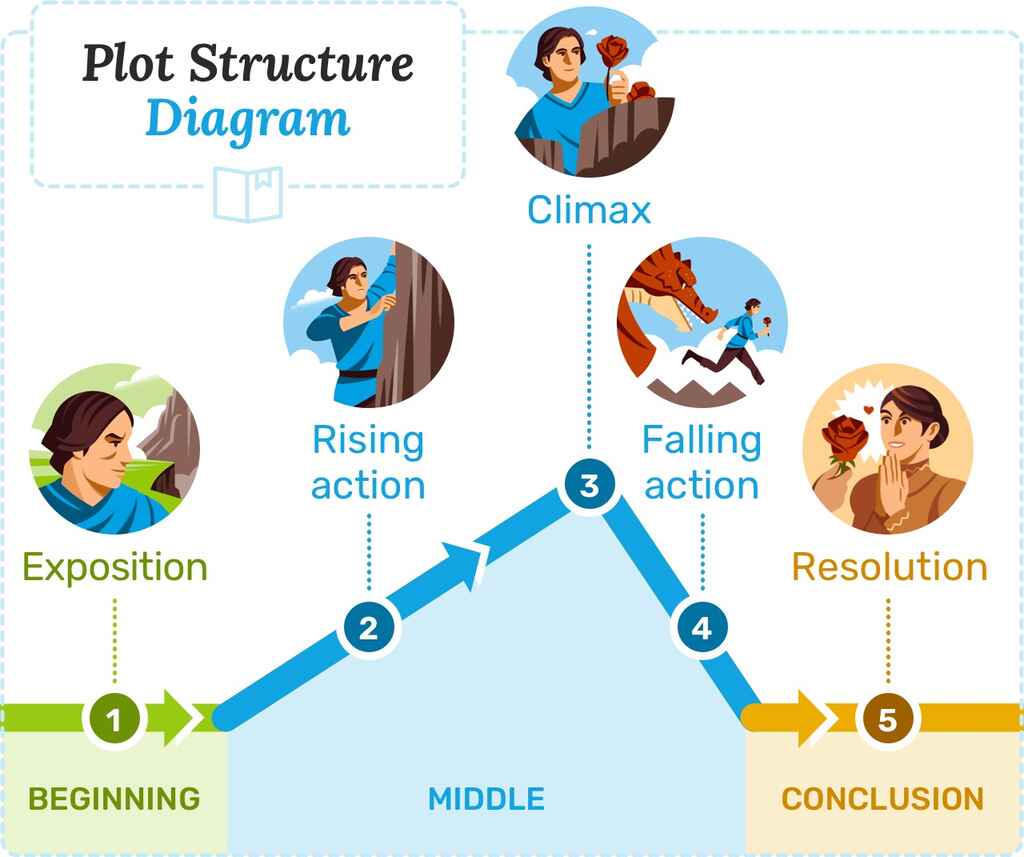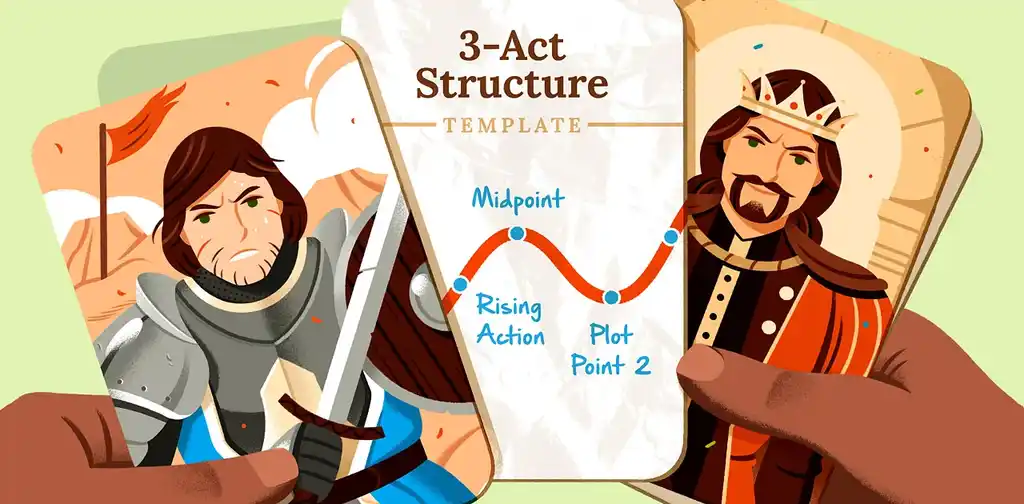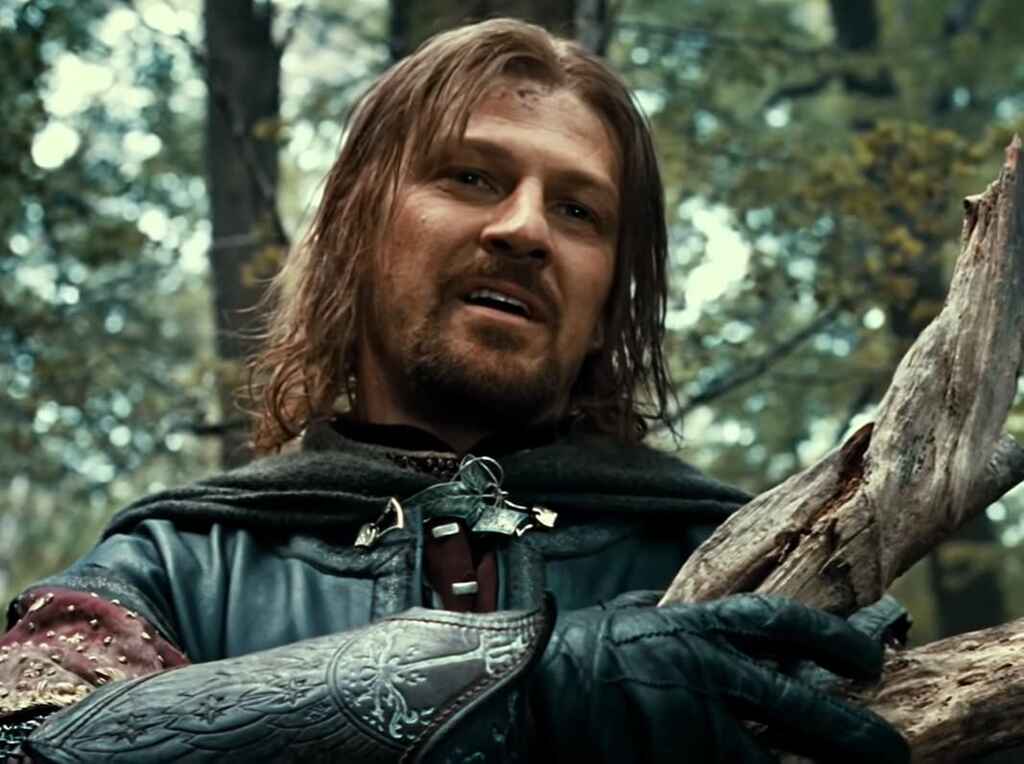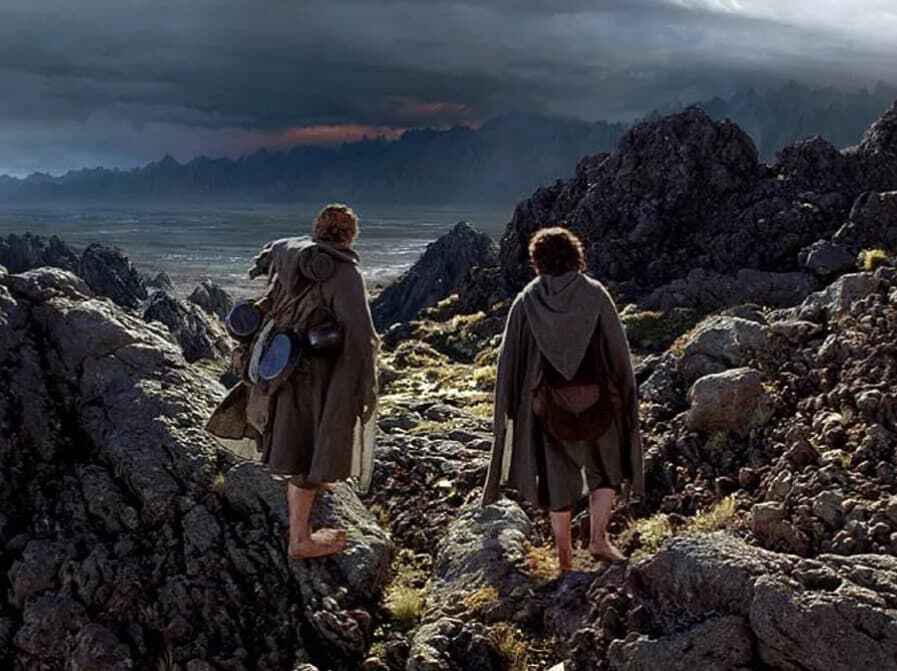Guides • Perfecting your Craft
Last updated on Nov 07, 2023
What is Plot Structure? Definition and Diagram
Plot structure is the order in which the events of a story unfold. In western storytelling traditions, it’s usually built out of five stages: exposition, rising action, climax, falling action, and resolution.
From Westworld and Jane Eyre to your grandma’s favorite childhood anecdote, most stories seem to follow this architecture. It dates back to Aristotle’s Three-Act structure, which divides a story into a beginning, middle, and end, and it was further elaborated on by German novelist Gustav Freytag, among others, who proposed a “technique for drama” — a five-stage plot structure that is now better known as Freytag’s pyramid.
In this post, we’ll look at the basic elements of plot structure in more detail. We’ll use Tolkien’s Fellowship of the Ring as an example with each stage. Though it may seem strange to demonstrate a five-step process with the first part of a trilogy, each book in The Lord of the Rings series has a complete plot with a distinct start and finish.
Plot Structure in Five Steps:

🧐
Which plot structure is right for your book?
Take our 1-minute quiz to find out.
1. Exposition
To kick off your story, you'll need to introduce your main characters and the world they inhabit , thus laying the groundwork for the story ahead. This segment is known as the exposition, and it serves to present the 'ordinary world' or the status quo for your characters.
Example: “One ring to rule them all.”
In Tolkien’s The Fellowship of the Ring, the 'ordinary world' is depicted through the lively and peaceful lives of hobbits in the Shire. It's only when an inciting incident jolts your character out of their comfort zone that the real action of the story gets underway. In this case, Frodo Baggins inherits a ring from his cousin Bilbo, but Gandalf reveals to him that it's the Ring of Power sought after by the dark lord Sauron 一 Frodo must embarks on a quest to destroy it.

☝️ We dive deeper into each of these five stages in this article on story structure. Also, if you’re keen to try to incorporate these “beats” into your own writing, get our free template below.

FREE RESOURCE
Three Act Structure Template
Craft a satisfying story arc with our free step-by-step template.
2. Rising Action
Once your protagonist is on a journey to accomplish something, the story truly comes alive and things start to happen. This sets the stage for a series of events in which the character faces ever more challenging internal and external conflicts, and makes both allies and enemies.
Example: “I will take the Ring to Mordor. Though I do not know the way.”
Frodo and his companions face many challenges, like the dreadful Black Riders, the freezing mountains, and the tension among some people in the group that the ring stirs up. The Fellowship, now made of nine valuable members, learns that Saruman has joined the enemy side.

This part is known as the rising action, it forms the bulk of the narrative, and it culminates in the narrative's emotional high point — the climax.
3. Climax
The climax in a story is the point where tension reaches its peak. It’s a pivotal moment or event that marks the point of no return for the character.
Example: “Fly, you fools.”
As the fellowship passes through the Mines of Moria, they confront a menacing creature, a Balrog. Gandalf fights off the beast, allowing the others to escape, but at the cost of his own life.

While the climax may not be the final obstacle for a protagonist, it is usually what induces them to truly take action to resolve their problem.
4. Falling Action
Following the climax, the story's tension begins to wane as unresolved issues and minor conflicts start to find closure. This beat serves as a sort of decompression chamber, allowing both characters and readers to step back from the intensity of the climax, and process “all that happened.”
Example: “You suffer, I see it day by day.”
Following the tragic loss of Gandalf, the Fellowship takes refuge in the mystical woods of Lothlórien, where they grapple with the gravity of their quest and reflect on their individual responsibilities. Boromir is seduced by the ring's power and tries to steal it from Frodo, though the hobbit manages to escape.

5. Resolution
The resolution (also called denouement) is the final phase in the story's plot structure, which wraps things up. While it often blends with the ‘falling action,’ the key difference is that the resolution offers closure to the story's main conflict. Essentially, it fulfills the promise of the premise set in motion by the inciting incident. That said, story endings can vary 一 some give a clear resolution, while others leave room for interpretation.
Example: “I’m going to Mordor alone.”
As for Frodo, he decides to separate from the group, fearing more of its members will be corrupted by the ring, and to continue the journey to Mordor alone (well, secretly followed by his best buddy Sam.) As The Fellowship of the Ring is only the first installment in a trilogy, the story's ultimate closure isn't reached until the final book. In spite of this, Frodo undergoes a significant character arc 一 from an unlikely and hesitant hero, dependent on other’s support, to a true leader determined to complete his mission.

And there you have them, the five key elements of plot structure. Whether you’re beginning to write a novel or working on a short story, dissecting its basic architecture can help you craft a cohesive and engaging narrative that keeps the reader turning the page.



